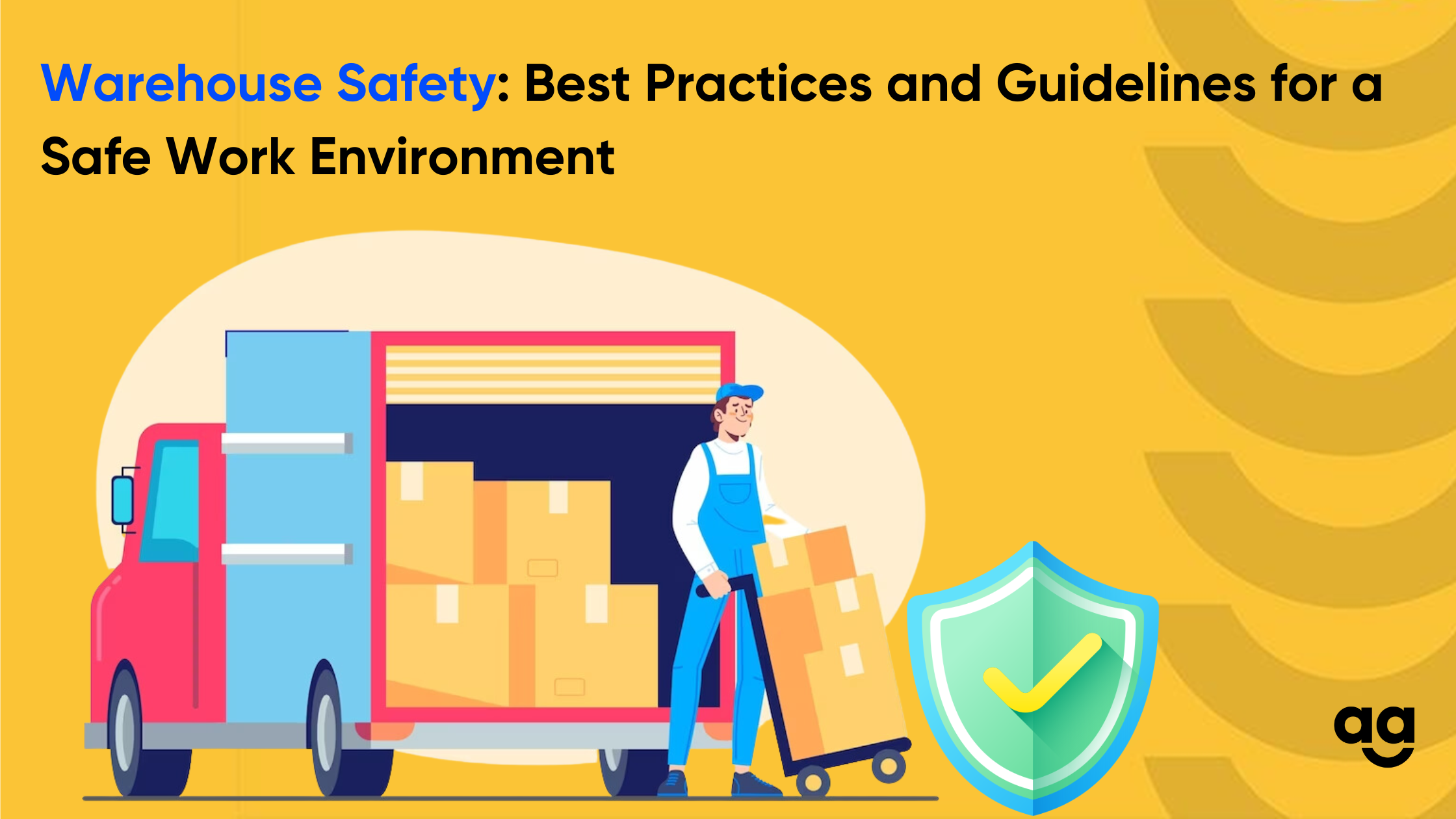Introduction
Warehouses are essential for many businesses, as they provide a space for storing and distributing goods. However, warehouses can also be hazardous environments, with potential risks such as falls, collisions, fires, and exposure to hazardous materials.
Therefore, it’s crucial to implement best practices and guidelines for warehouse safety to ensure a safe work environment for employees and visitors. In this blog, we’ll discuss some of the best practices and guidelines for warehouse safety.
4 Best Practices for Warehouse Safety
1. Conduct Regular Safety Inspections
One of the best practices for warehouse safety is to conduct regular safety inspections. Safety inspections can help identify potential hazards, such as damaged equipment, blocked aisles, or spills, and take corrective actions to prevent accidents. Safety inspections should be conducted by trained and qualified personnel, such as safety managers, supervisors, or safety committees, who follow a checklist or a standard procedure.
Moreover, safety inspections should be documented and communicated to all employees, so they are aware of the hazards and the corrective actions taken. Safety inspections should also be conducted after any significant changes in the warehouse layout, equipment, or operations, to ensure that the safety measures are up-to-date and effective.
2. Provide Adequate Training and Education
Another best practice for warehouse safety is to provide adequate training and education to all employees. Training and education can help employees understand the hazards and the safety procedures of the warehouse, and how to use the equipment and the tools safely.
Training and education should be provided to new employees, as well as to existing employees, on a regular basis, to ensure that they are aware of any changes or updates in the safety procedures.
Moreover, training and education should be tailored to the specific needs and roles of each employee, such as forklift operators, packers, shippers, or supervisors. Training and education should also be provided in a language and format that is accessible and understandable to all employees, regardless of their background or education level.
3. Implement Safety Equipment and Devices
Another best practice for warehouse safety is to implement safety equipment and devices that can help prevent accidents, such as falls, collisions, or fires, and protect employees from injuries or illnesses. Safety equipment and devices can include personal protective equipment (PPE), such as hard hats, safety glasses, gloves, or respirators, as well as safety barriers, such as guardrails, bollards, or fencing.
Moreover, safety equipment and devices should be regularly inspected, maintained, and replaced, as needed, to ensure their effectiveness and reliability. Safety equipment and devices should also be clearly marked and labeled, so employees can easily identify them and use them correctly.
4. Promote a Safety Culture
Another important practice for warehouse safety is to promote a safety culture. A safety culture is a set of values, attitudes, and behaviors that prioritize safety as a core value of the organization. A safety culture can help create a positive and proactive environment, where employees are encouraged to report hazards, suggest improvements, and participate in safety initiatives.
Moreover, a safety culture can also help reduce the stigma and the fear of reporting accidents or near-misses, and encourage employees to learn from their mistakes and prevent future incidents. A safety culture should be promoted by the leadership of the organization, as well as by the employees themselves, through communication, recognition, and feedback.
3 Important Guidelines for Warehouse Safety
1. Keep Aisles and Exits Clear
One of the guidelines for warehouse safety is to keep aisles and exits clear. Aisles and exits should be free of obstacles, such as boxes, pallets, or equipment, to allow safe and easy movement of employees and materials. Aisles and exits should also be clearly marked and illuminated, to ensure visibility and direction.
Moreover, aisles and exits should be wide enough to accommodate the traffic flow and the emergency evacuation, and should comply with the local regulations and standards. Aisles and exits should also be regularly inspected and maintained, to ensure their safety and functionality.
2. Store Materials Properly
Another guideline for warehouse safety is to store materials properly. Materials should be stored in a way that prevents them from falling, collapsing, or spilling, and that allows easy access and retrieval. Materials should also be stored according to their weight, size, and fragility, and should be labeled and identified, to avoid confusion and errors.
Moreover, materials should be stored in a way that complies with the local regulations and standards, such as the fire codes, the hazardous materials regulations, or the environmental regulations. Materials should also be stored in a way that allows proper ventilation, lighting, and temperature control, to maintain their quality and safety.
3. Use Equipment Safely
Another guideline for warehouse safety is to use equipment safely. Equipment, such as forklifts, pallet jacks, or conveyors, should be operated by trained and authorized personnel, who follow the safety procedures and the manufacturer’s instructions. Equipment should also be inspected and maintained regularly, to ensure their safety and reliability.
Moreover, equipment should be used in a way that prevents collisions, falls, or entanglements, and that allows safe and efficient movement of materials. Equipment should also be used in a way that complies with the local regulations and standards, such as the noise regulations, the emissions regulations, or the electrical regulations.
Conclusion
Warehouse safety is a critical aspect of any business that operates a warehouse. By implementing best practices and guidelines for warehouse safety, businesses can create a safe and productive work environment, where employees can perform their tasks without fear of accidents or injuries.
By conducting regular safety inspections, providing adequate training and education, implementing safety equipment and devices, and promoting a safety culture, businesses can ensure that their warehouse is a safe and successful operation.







 Shipping
Shipping







